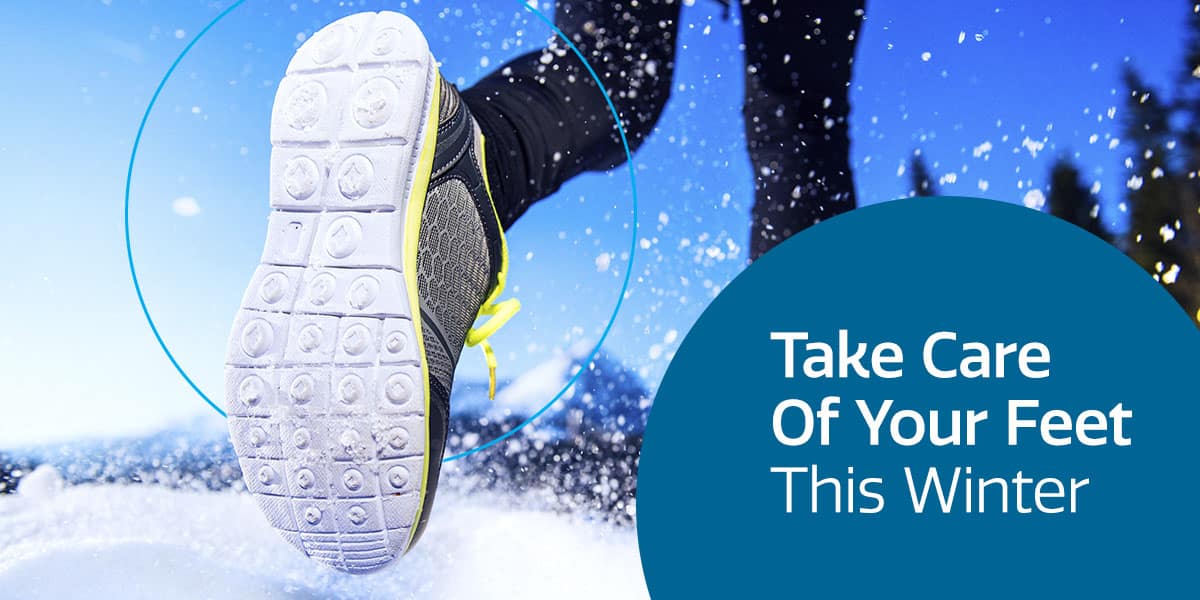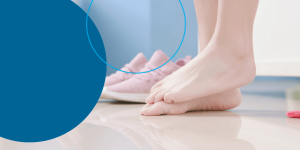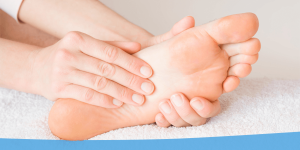When cold, dry weather hits, many people apply extra moisturizer to their hands, arms and legs — but what about their feet? From fungus and bacteria to cracked skin, frostbite and injuries, the risks of not paying attention to your foot health are extensive. Keep your feet soft and safe with these seven tips for caring for your feet in cold weather.
1. Keep Your Shoes and Socks Dry
Melted snow and sweat can gather in your shoes in the winter, creating a damp, wet environment perfect for bacterial, fungal and mold growth. Moisture can also make you more susceptible to frostbite. You’ll probably want to avoid unpleasant-smelling, damp footwear, too. If you see signs of moisture when you remove your shoes, like wrinkly toes or pale feet, take measures to keep your feet drier.
When your socks and boots get wet, remove them immediately. Always let your boots dry completely before wearing them again. Here are a few tips for keeping boots dry:
- Put them upside-down and remove the liner to speed up the process.
- Consider buying a boot dryer or alternating between two pairs each day.
- Add foot powder inside your socks before wearing them.
Letting your skin breathe is also helpful. Opt for moisture-wicking socks that can help your sweat evaporate better or breathable materials to improve airflow and reduce sweat.
2. Clean and Moisturize Your Feet
Keeping moisture out of your socks and shoes is crucial to keep your feet clean and hydrated. Those damp, warm environments can lead to fungus and bacteria, which often grow under your toenails or between your toes. Dry air and heating systems can also dry your skin and lead to cracks, bleeding or heel fissures. Heel fissures can even allow fungus and bacteria to enter the foot and cause infections.
Prevent these issues with everyday cleaning and a high-quality moisturizer, but don’t put too much between your toes. It can cause moisture to build in those crevices. After bathing, fully dry your feet before putting socks on.
3. Wear the Right Socks and Shoes
All socks, shoes and boots must fit you well. Ill-fitting footwear can cause painful blisters, chafing, ingrown toenails and injuries, such as frostbite or a twisted ankle from a patch of ice. Tight footwear can decrease blood flow, so it’s more challenging for your body to keep your feet warm. Reduced blood flow could increase the risk of frostbite or exacerbate conditions that affect your nerves or circulation, like diabetic neuropathy or Raynaud’s syndrome.
Make sure socks and shoes fit comfortably and aren’t too tight. You should have enough room to wiggle your toes, but the ball, heel and instep should be stable. Boots should also have a supportive heel, snug lacing or straps and a high-traction tread for stability on icy or wet surfaces.
Though you might think about layering your socks for warmth, wearing multiple pairs will reduce room in your shoes. They can impede circulation and bunch your toes together, leading to corns or blisters. Get looser-fitting socks if you take them off and see deep lines sticking around for more than a few minutes.
4. Fit Winter Sports Footwear Appropriately
If you spend your winters on the slopes or ice rink, remember the same principles when sizing skiing and snowboarding boots and skates. Again, your toes should wiggle while the rest of your foot stays in place.
Proper sizing is crucial for these high-speed sports, as poorly fitting boots or skates can cause significant injuries during a fall or collision. Specially made insoles can improve comfort and offer support during winter sports.
5. Size Your Kids’ Footwear Properly
Many parents like to size up their kids’ clothes so they’ll grow into them. While that works for things like sweaters and coats, footwear should always fit well from the start. Buy well-fitting shoes and boots for kids, including skates and ski or snowboarding boots.
When sizing kids’ shoes, don’t rely on the label. Shoe and boot sizes can vary significantly, so always have your child try them on. Regularly refit your kids for shoes and boots, especially after a growth spurt.
6. Be Careful if You Have a Medical Condition
Some medical conditions affect your ability to feel pain or reduce blood flow to the feet. If you have circulation issues, like Raynaud’s disease, peripheral artery disease or diabetes symptoms, the reduced blood flow might cause your feet to get colder and lead to complications like frostbite. It can also slow wound healing, making it harder for cracked or damaged skin to mend itself.
Peripheral neuropathy, nerve damage and diabetes are some conditions that make it harder to feel sensations like pain, pressure and coldness. If you have a sensory problem, you may not notice when your shoes become dangerously tight or your feet get too cold. You could develop blisters and calluses more quickly or exacerbate pain.
Be extra cautious with conditions like these. Check on your feet frequently, and know what to look for, such as numbness, a “pins-and-needles” sensation, pale or bluish skin, swelling, redness or inflammation. Talk to your provider about any concerns. If you have nerve damage, also ask your physician about using foot warmers, as they can cause burns.
7. Adapt Exercise Practices
Winter running can offer a heart-pumping workout, but icy conditions make running more challenging. Revise your stride length instead of adjusting how your foot hits the ground. By taking shorter strides, you land closer to the center of mass, reducing the chance your foot will slide out from under you and cause an injury. Also, you may use muscles you don’t normally engage, so be ready for some unexpected soreness.
Make sure your running shoes offer high traction in these conditions. If you run on particularly slippery path, consider adding traction cleats, which can slide over your shoes.
Keep Your Feet Healthy All Year Round
Winter weather can cause many problems, but the above strategies can keep your feet warm and healthy all year.
At Foot & Ankle Surgical Associates, our skilled podiatrists can treat winter-related foot problems like fungal or bacterial growth, injuries and neuropathy or circulation issues. We can also provide resources for treatment and prevention, such as orthotics and diabetes checks. Call us at 360-754-3338 for more information!




